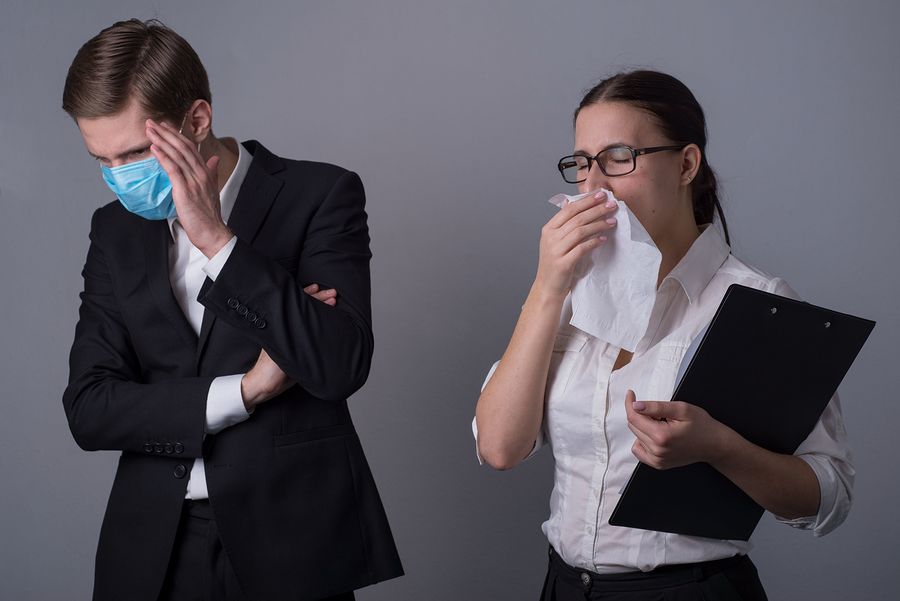Please click here to read Part 1: https://realstrategy.com/rethinking-returning-office/
We all know that everyone isn’t as hygienic at work as they should be. So at Real Strategy Advisors, we thought we’d share some health and safety ideas as the world discusses heading back to work. We recently introduced the concept of a phased approach towards office re-occupancy in our earlier post. Limiting the capacity of people, using team-based shifts to control population flow, and allowing for physical distancing in the office, will all help contribute to a safer return.
In this second piece of our “COVID-19 How to Avoid an Outbreak Returning to Work” series, we’ll be investigating the safety and hygiene aspects of workplaces in more detail. We’ll cover protocols that should be considered with reference to personal and shared office spaces. Though we might all want to go back to work as though nothing is different, we should all embrace this chance to change our workspaces for the positive and make them as safe as possible for each other.
Standardized Protocols
Cautious leaders should be looking at all avenues to control the number and flow of people into the workplace (employee or otherwise) as part of a phased re-entry. Having staggered work times and days with scheduled or lengthened break times are simple considerations in this respect. Distributing employee screening systems (e.g. Infrared Fever Scan Systems or IFss), gloves, and masks will also become more commonplace in the months to come.
Make sure you order health and safety supplies well before your planned return date to ensure you receive them in time!
Daytime cleaning efforts should be increased both to mitigate risk and maintain a level of visibility so people don’t have to worry when and whether it’s occurring. This may be a supplemental service over and above what’s offered by your property manager. Another simple change to reduce transmission is to ensure the person tasked with garbage collection and disposal can do so in a safe manner.
Apart from basic but practical changes, some areas for improvement and investment would be:
- No-touch toilets and sinks
- Sanitization of door handles
- Hand sanitizer and disinfectant supplies
- Electro-static cleaning options
Guest Screening
Access to your workplace might need to be controlled more rigorously. You should be thinking about what type of screening procedures might need to be in place to avoid any risk in this respect. Depending on the frequency of clients and visitors to your office, you may want to consider assigning an employee to handle greetings and screenings. Contact your local health authorities to develop screening questions and have a supply of hand sanitizer/masks for your guests. Depending on how guests answer your questions regarding their potential exposure, different steps might be required.
Personal Spaces
The office floor plan may also need to be adapted to allow for increased physical distancing. Temporary dividing panels may be required and furniture re-configured to avoid staff sitting face-to-face, are other changes that might be implemented prior to their return People should be encouraged to use and be provided with personal protective equipment (PPE). Clean desk policies will also be necessary as the removal of extra items on a desk space will allow cleaning crews to do their jobs more thoroughly ensuring the entirety of the space is safe.
Shared Spaces
In the larger, common spaces of the office, such as hallways, kitchens, and meeting spaces, there are other measures that will need to be taken to decrease the chances of viral spread. Swap out couches for more individualized chair options that can be spaced apart. For the time being, reduce the extra seating and chairs from collaboration areas/conference rooms. For kitchens and eating areas, make sure these spaces are used only on a necessary basis, if at all.
All shared areas must be thoroughly wiped down and sanitized after each use as recommended by local health authorities. Temporarily remove any magazines, table decorations, or other items that might normally be on display. Decide who will have access to and distribute supplies like pens and paper. Talk to your IT department and suppliers about business equipment such as printers/copiers to discuss touchless options. This may be the perfect time to reduce or eliminate paper within your organization and make the transition to digital.
Making the Adjustment
Some of the considerations and changes here are fairly easy to implement. Others may require some investment and adjustment. That said, they all require advanced discussion and planning to ensure we will all benefit from a safe work environment. Though we are not health professionals, if you have questions about preparing your office space for an optimal return, contact Real Strategy Advisors today!
Download the Public Services Health & Safety Association’s Health and Safety Guidance During COVID-19 For Employers of Office Settings document.
The information that Real Strategy Advisors provides does not replace that provided by your local health authority. The information is for your general use, so be sure to talk to a qualified professional before making medical decisions or if you have questions about health and safety.

